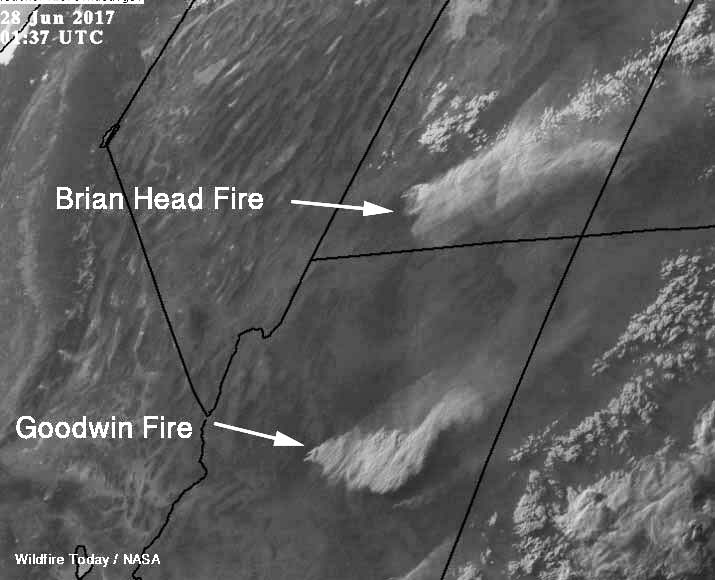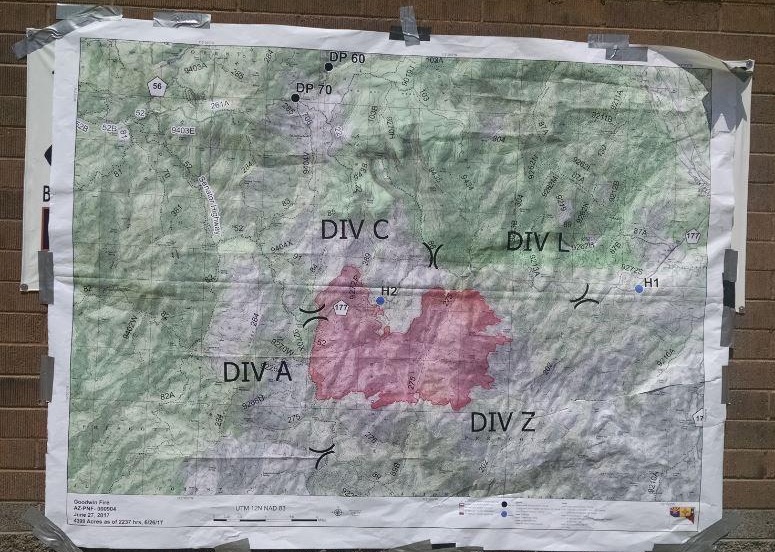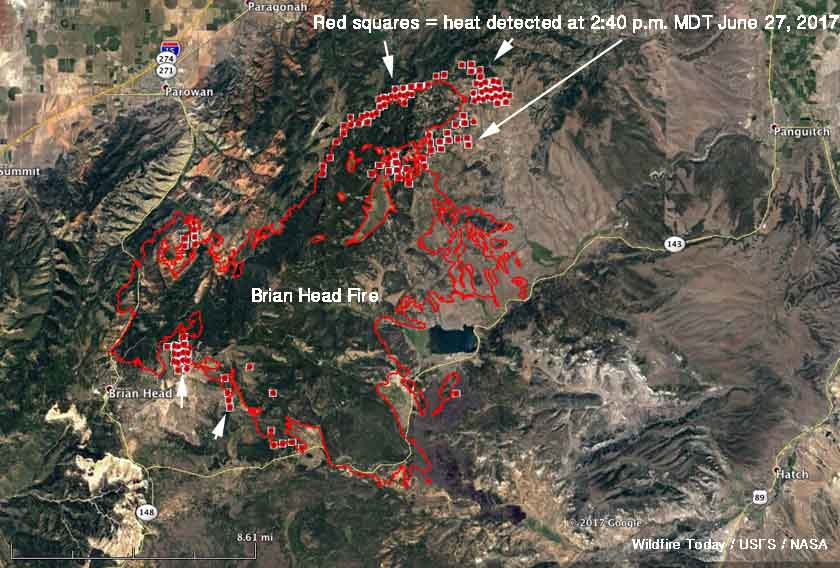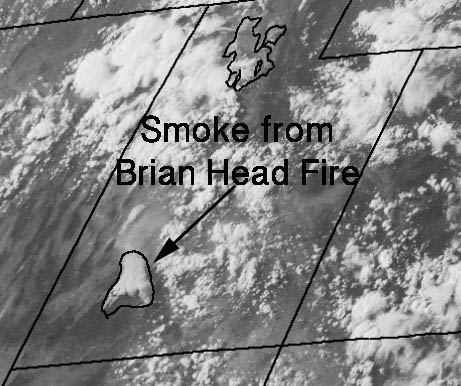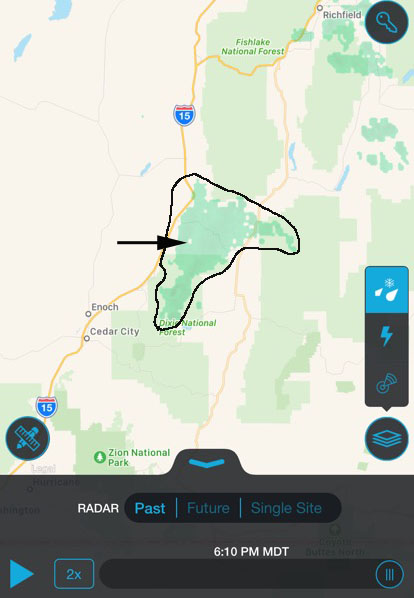Above: 3-D map of the Goodwin Fire at 9 p.m. MDT June 27, 2017.
(Originally published at 7:04 a.m. MDT June 28, 2017)
(Updated at 11:45 a.m. MDT June 28, 2017)
Wednesday morning the Goodwin fire was five times larger than it was 24 hours earlier. Southwest winds and low humidities caused it to spread to the northeast threatening the town of Mayer, Arizona which was under a mandatory evacuation order. It crossed highway 69 just north of the town and as of 9 p.m. Tuesday had spread for another two miles east of the highway, growing to about 20,600 acres. The previous night it was at 4,400 acres and had expanded to about 12,000 acres by 2:40 p.m. Tuesday.
The weather forecast for Wednesday is not good news for firefighters. The outlook is for 93 degrees, 11 percent relative humidity, and by noon the wind should increase to 12 to 15 mph out of the south to southwest with gusts to 27.
At a media briefing Wednesday at 11:20 a.m., Incident Commander John Pierson said an area of fuel mitigation completed by the state of Arizona north of Mayer was instrumental in helping to protect the town as the fire ran across Highway 69. He also said there is a good chance the portion of the fire that is east of the Highway can be contained by the dozers and hand crews that are working in that area.
On Wednesday air tankers began dropping retardant on the fire at 8 a.m. There are no ground troops in those locations to follow up and construct firelines, so the best firefighters can hope for, Mr. Pierson said, is that the spread of the fire will be slowed or delayed.
While the fire was making its big run Tuesday, a weather station at Sunset Point 14 miles southeast of the fire recorded a temperature of 101 degrees, 3 percent relative humidity, and 11 to 15 mph winds out of the south to southwest winds gusting at 23 to 31 mph.
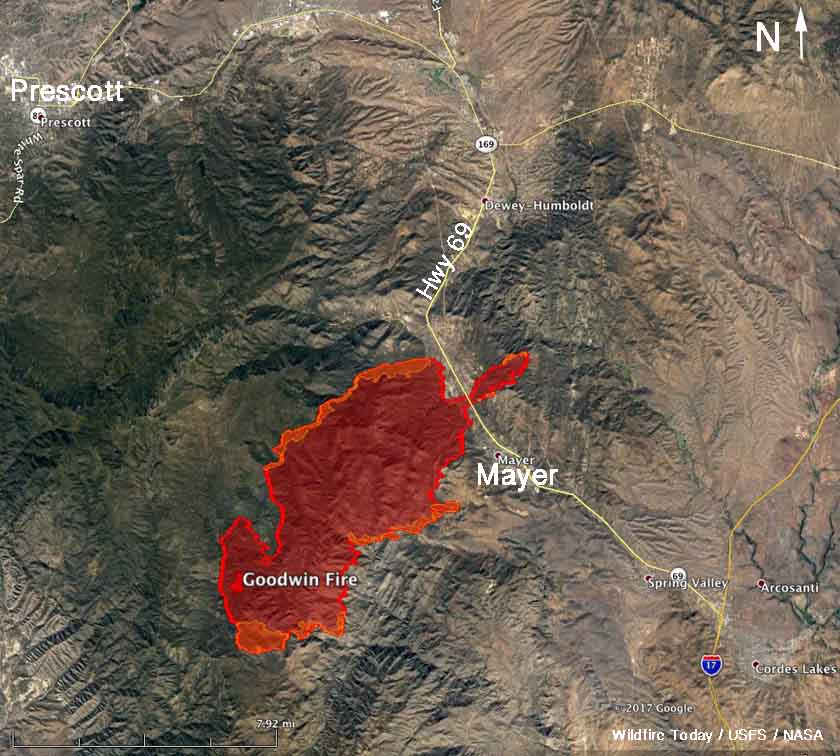
Highway 69 is closed at Mayer. Evacuations are in effect for several communities in the area.
The National Situation Report says nine structures have burned since the fire started, but it is unclear when or where that occurred. There are no reports yet of any structures being destroyed as the fire approached Mayer. A June 27 news release from the Incident Management Team includes this information:
Goodwin Fire managers and cooperators have been receiving inquiries regarding structures damaged or destroyed during the first day of Goodwin Fire. It was reported that structures have been destroyed and the Yavapai County Sheriff’s Office personnel are working with fire officials to determine the extent of damaged structures. However, this can only be accomplished when it is safe for deputies to enter, complete an accurate assessment, and determine ownership. Efforts to expedite the release of such information is ongoing. In the meantime, the patience of those residents who have been evacuated is greatly appreciated.
Beth Lund’s Type 1 Incident Management Team which had been staged at Phoenix has been ordered for the fire. They will be working with John Pierson’s Type 1 Incident Management Team that is already there.
#GoodwinFire Sunrise view from Dewey-Humboldt. No wind yet; fingers crossed! pic.twitter.com/PLFSbPZLgT
— Kimber Agonistes (@KimberAgonistes) June 28, 2017
In the video below, smoke from the Goodwin Fire can be seen in the lower-left corner. The other fire to the north is the Brian Head Fire east of Cedar City, Utah.
#GOES16 this afternoon! Several smoke plumes can be seen with the most prominent being the #BrianHeadFire & #GoodwinFire. #azfire #utfire pic.twitter.com/s2uZTJU6Bn
— Matt Pace (@MattPaceWeather) June 28, 2017
All articles on Wildfire Today about the Goodwin Fire near Mayer, Arizona.



